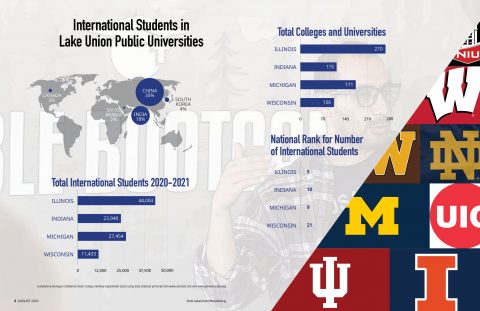
Regardless of the validity of the arguments, the reality is that an increasing number of Adventist students—especially the minority demographics that make up the majority of our North American Church population—are finding a growing list of reasons for not attending Adventist colleges and universities.
Anyone skeptical about these statistics is not currently in touch with our denomination’s educational administrators in North America and beyond. The challenges are many and complex.
Most of the North American Division church membership is made up of minority groups. These individuals, especially African American, Asian and Latino students, are viewed as a growing asset by colleges and universities in some of our nation’s most populous states. Backed by substantial government support, these state colleges heavily target minority groups in an effort to “embrace our demographic future.” (2)
This poses a significant challenge for Adventist institutions of higher learning. Even though our schools receive a large sum of funding from local conferences, unions, divisions and—in some cases—the General Conference, church subsidies make up a discouraging 10 percent of operating funds, making it difficult for our tuition-dependent institutions to compete with other better funded public and private schools in our nation. (3)
Regardless of the validity of the arguments, the reality is that an increasing number of Adventist students—especially the minority demographics that make up the majority of our North American Church population—are finding a growing list of reasons for not attending Adventist colleges and universities.
According to the Institute of International Education, the leading nonprofit educational exchange organization in the United States, more than one million (or 5 percent) of students studying in our country’s colleges and universities are international students. Saudi Arabia, China, India, Vietnam, Taiwan and Japan make up more than 60 percent of the international student population on public college campuses. This population is known by some missiologists as the 10-40 Window—the area with the greatest number of unreached people groups around the globe. Thirteen of the top 25 places of origin for international students are nations whose populations are predominantly or entirely non-Christian. These countries include Indonesia, Turkey, Malaysia, Nepal and Iran. (4)
Although sending missionaries on overseas mission trips is critical to the mission of the Seventh-day Adventist Church, it is hard to justify a more efficient method of world mission outreach than reaching international students on public university campuses. In addition to engaging the future leaders of the world and the wealthy and educated, public campus ministry is more pragmatically effective. International students of non-Christian religions who are studying on American college campuses have already overcome the language barrier. We are engaging them on safer grounds. And, in many cases, we have an easier time engaging with them on a cultural level than we would if we were guests in their home countries.
Reaching the public college campus is the most effective missional way to reach the world of non-Christian global religions. It also is the most responsible way of reaching the North American Division’s largest unreached people group in its territory. (5)
Although there are many creative approaches for ministering to non-Christian religions on the college campus, here are five suggestions.
Community is becoming more crucially important for college students. For many students, loneliness—the feeling that social needs are not being adequately met—is a common experience on college campuses. (6) In fact, some experts say that loneliness has hit epidemic proportions among millennials in the United States. (7) Having sober barbecues, wholesome game nights and meaningful meetings are simple, effective ways to build community among students of non-Christian religions.
Second, many international students who come have an appreciation for American culture. However, students from other countries often discover that there are major differences between our educational system and what they’re accustomed to at home: professors have office hours, the grading system is different, group projects are sometimes required, and more. (8) Inviting international students to celebrate holidays (American or those of their native country) or learning about other aspects of our culture is a good way to reach them.
Academic tutoring is a third significant way to reach the needs of international students. For most, English is not their first language and they’ll have to study longer hours in order to fully grasp material. Helping academically is a strong way to serve and practice Christ’s method of reaching people.
Fourth, international students welcome spiritual conversations more than many anticipate. The reason why some do not experience successful spiritual conversation with students is usually because they lack a tactful approach or are unwise in their timing. In most cases, it is fairly easy to engage in spiritual discussion when it becomes a natural part of everyday living. When spirituality is not something we put on and take off, but is instead who we are, spiritual conversations lose their awkwardness and become meaningful for the Adventist student and the non-Christian student, alike.
The ultimate purpose of the Seventh-day Adventist should be to reveal Christ in the life. In the early Christian church, “one interest prevailed; one subject of emulation swallowed up all others. The ambition of the believers was to reveal the likeness of Christ’s character and to labor for the enlargement of His Kingdom.” (9)

Israel Ramos is Public Campus Ministry director for the Lake Union and Michigan conferences.